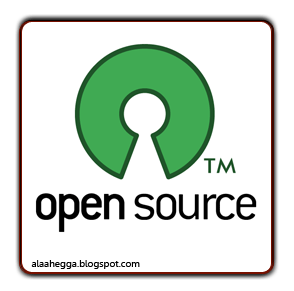In this post I'll discuss the books study materials and tools for passing and taking RHCE exam.
Tools1-Two Redhat Enterprise Linux 5 Client latest 5.4 or Centos 5.4 client
2-one RedHat Enterprise Linux 5 Server lates 5.4 or Centos 5.4 Server
Download RHEL5.4 and Centos 5.4 torrnethttp://www.4shared.com/file/147268966/35a7c15f/Red_Hat_Enterprise_Linux_54_server_mininova.htmlhttp://www.4shared.com/file/147269051/37835bd5/CentOS-54-i386-bin-DVD_mininova.htmlor
Redhat Enterprise Linux V5.4 DVDhttp://rapidshare.com/files/278306219/h-re548d.r00
http://rapidshare.com/files/278307216/h-re548d.r01
http://rapidshare.com/files/278304250/h-re548d.r02
http://rapidshare.com/files/278307318/h-re548d.r03
http://rapidshare.com/files/278305706/h-re548d.r04
http://rapidshare.com/files/278306566/h-re548d.r05
http://rapidshare.com/files/278304749/h-re548d.r06
http://rapidshare.com/files/278306818/h-re548d.r07
http://rapidshare.com/files/278303261/h-re548d.r08
http://rapidshare.com/files/278307378/h-re548d.r09
http://rapidshare.com/files/278307606/h-re548d.r10
http://rapidshare.com/files/278304810/h-re548d.r11
http://rapidshare.com/files/278306836/h-re548d.r12
http://rapidshare.com/files/278303696/h-re548d.r13
http://rapidshare.com/files/278306127/h-re548d.r14
http://rapidshare.com/files/278303702/h-re548d.r15
http://rapidshare.com/files/278305921/h-re548d.r16
http://rapidshare.com/files/278306111/h-re548d.r17
http://rapidshare.com/files/278303235/h-re548d.r18
http://rapidshare.com/files/278306614/h-re548d.r19
http://rapidshare.com/files/278304729/h-re548d.r20
http://rapidshare.com/files/278304211/h-re548d.r21
http://rapidshare.com/files/278306276/h-re548d.r22
http://rapidshare.com/files/278304457/h-re548d.r23
http://rapidshare.com/files/278304657/h-re548d.r24
http://rapidshare.com/files/278306514/h-re548d.r25
http://rapidshare.com/files/278304744/h-re548d.r26
http://rapidshare.com/files/278303824/h-re548d.r27
http://rapidshare.com/files/278306211/h-re548d.r28
http://rapidshare.com/files/278305541/h-re548d.r29
http://rapidshare.com/files/278305035/h-re548d.r30
http://rapidshare.com/files/278305789/h-re548d.r31
http://rapidshare.com/files/278304483/h-re548d.r32
http://rapidshare.com/files/278303690/h-re548d.r33
http://rapidshare.com/files/278306516/h-re548d.r34
http://rapidshare.com/files/278304776/h-re548d.r35
http://rapidshare.com/files/278307273/h-re548d.r36
http://rapidshare.com/files/278307729/h-re548d.r37
http://rapidshare.com/files/278305997/h-re548d.r38
http://rapidshare.com/files/278307187/h-re548d.r39
http://rapidshare.com/files/278306265/h-re548d.r40
http://rapidshare.com/files/278305186/h-re548d.r41
http://rapidshare.com/files/278307570/h-re548d.r42
http://rapidshare.com/files/278305877/h-re548d.r43
http://rapidshare.com/files/278307506/h-re548d.r44
http://rapidshare.com/files/278305083/h-re548d.r45
http://rapidshare.com/files/278307074/h-re548d.r46
http://rapidshare.com/files/278305282/h-re548d.r47
http://rapidshare.com/files/278306940/h-re548d.r48
http://rapidshare.com/files/278304833/h-re548d.r49
http://rapidshare.com/files/278304248/h-re548d.r50
http://rapidshare.com/files/278308004/h-re548d.r51
http://rapidshare.com/files/278305680/h-re548d.r52
http://rapidshare.com/files/278303207/h-re548d.r53
http://rapidshare.com/files/278307183/h-re548d.r54
http://rapidshare.com/files/278303800/h-re548d.r55
http://rapidshare.com/files/278305959/h-re548d.r56
http://rapidshare.com/files/278307773/h-re548d.rar
http://rapidshare.com/files/278305666/h-re548d.sfv
http://rapidshare.com/files/278303673/hotiso.nfo
Password:http://wareznet.net/ Or
CD1
http://hotfile.com/dl/8868035/0720e1e/RHE5-CD1.part1.rar.html
http://hotfile.com/dl/8868050/4accadc/RHE5-CD1.part2.rar.html
http://hotfile.com/dl/8868065/c5aa975/RHE5-CD1.part3.rar.html
http://hotfile.com/dl/8868082/ca153b6/RHE5-CD1.part4.rar.html
http://hotfile.com/dl/8868107/ebf6277/RHE5-CD1.part5.rar.html
http://hotfile.com/dl/8868122/8e54730/RHE5-CD1.part6.rar.html
http://hotfile.com/dl/8868145/1182f89/RHE5-CD1.part7.rar.html
CD2
http://hotfile.com/dl/8868165/2d67531/RHE5-CD2.part1.rar.html
http://hotfile.com/dl/8868179/48a0d22/RHE5-CD2.part2.rar.html
http://hotfile.com/dl/8868194/89ad13d/RHE5-CD2.part3.rar.html
http://hotfile.com/dl/8868217/f71a46c/RHE5-CD2.part4.rar.html
http://hotfile.com/dl/8868229/2503e8a/RHE5-CD2.part5.rar.html
http://hotfile.com/dl/8868248/d842206/RHE5-CD2.part6.rar.html
http://hotfile.com/dl/8868267/1986139/RHE5-CD2.part7.rar.html
http://hotfile.com/dl/8868274/04b8434/RHE5-CD2.part8.rar.html
CD3
http://hotfile.com/dl/8868290/14685db/RHE5-CD3.part1.rar.html
http://hotfile.com/dl/8868300/4b6a0d2/RHE5-CD3.part2.rar.html
http://hotfile.com/dl/8868321/9ac268b/RHE5-CD3.part3.rar.html
http://hotfile.com/dl/8868371/29f2df0/RHE5-CD3.part4.rar.html
http://hotfile.com/dl/8868390/f656303/RHE5-CD3.part5.rar.html
http://hotfile.com/dl/8868404/76d4d4e/RHE5-CD3.part6.rar.html
http://hotfile.com/dl/8868421/3d498bf/RHE5-CD3.part7.rar.html
http://hotfile.com/dl/8868426/b08e74a/RHE5-CD3.part8.rar.html
CD4
http://hotfile.com/dl/8868444/22fb1c6/RHE5-CD4.part1.rar.html
http://hotfile.com/dl/8868460/1fe1e93/RHE5-CD4.part2.rar.html
http://hotfile.com/dl/8868488/33bac14/RHE5-CD4.part3.rar.html
http://hotfile.com/dl/8868505/c28d3c0/RHE5-CD4.part4.rar.html
http://hotfile.com/dl/8868526/4bab411/RHE5-CD4.part5.rar.html
http://hotfile.com/dl/8868545/4f964bd/RHE5-CD4.part6.rar.html
http://hotfile.com/dl/8868558/ea17158/RHE5-CD4.part7.rar.html
http://hotfile.com/dl/8868567/d6b0c07/RHE5-CD4.part8.rar.html
CD5
http://hotfile.com/dl/8868582/defd4c3/RHE5-CD5.part1.rar.html
http://hotfile.com/dl/8868593/8d054d6/RHE5-CD5.part2.rar.html
http://hotfile.com/dl/8868595/2300b48/RHE5-CD5.part3.rar.html
Download Centos DVDhttp://rapidshare.com/files/250286018/centos5.rar
http://rapidshare.com/files/149209427/CentOS-5.1-i386-bin-DVD.part01.rar
http://rapidshare.com/files/149221522/CentOS-5.1-i386-bin-DVD.part02.rar
http://rapidshare.com/files/149232257/CentOS-5.1-i386-bin-DVD.part03.rar
http://rapidshare.com/files/149242291/CentOS-5.1-i386-bin-DVD.part04.rar
http://rapidshare.com/files/149251798/CentOS-5.1-i386-bin-DVD.part05.rar
http://rapidshare.com/files/149261091/CentOS-5.1-i386-bin-DVD.part06.rar
http://rapidshare.com/files/149270602/CentOS-5.1-i386-bin-DVD.part07.rar
http://rapidshare.com/files/149279383/CentOS-5.1-i386-bin-DVD.part08.rar
http://rapidshare.com/files/149287578/CentOS-5.1-i386-bin-DVD.part09.rar
http://rapidshare.com/files/149295917/CentOS-5.1-i386-bin-DVD.part10.rar
http://rapidshare.com/files/149304578/CentOS-5.1-i386-bin-DVD.part11.rar
http://rapidshare.com/files/149318688/CentOS-5.1-i386-bin-DVD.part12.rar
http://rapidshare.com/files/149329692/CentOS-5.1-i386-bin-DVD.part13.rar
http://rapidshare.com/files/149341526/CentOS-5.1-i386-bin-DVD.part14.rar
http://rapidshare.com/files/149368468/CentOS-5.1-i386-bin-DVD.part15.rar
http://rapidshare.com/files/149385589/CentOS-5.1-i386-bin-DVD.part16.rar
http://rapidshare.com/files/149401389/CentOS-5.1-i386-bin-DVD.part17.rar
http://rapidshare.com/files/149416961/CentOS-5.1-i386-bin-DVD.part18.rar
http://rapidshare.com/files/149432530/CentOS-5.1-i386-bin-DVD.part19.rar
http://rapidshare.com/files/149447991/CentOS-5.1-i386-bin-DVD.part20.rar
http://rapidshare.com/files/149465432/CentOS-5.1-i386-bin-DVD.part21.rar
http://rapidshare.com/files/149481458/CentOS-5.1-i386-bin-DVD.part22.rar
http://rapidshare.com/files/149495840/CentOS-5.1-i386-bin-DVD.part23.rar
http://rapidshare.com/files/149509612/CentOS-5.1-i386-bin-DVD.part24.rar
http://rapidshare.com/files/149521508/CentOS-5.1-i386-bin-DVD.part25.rar
http://rapidshare.com/files/149532200/CentOS-5.1-i386-bin-DVD.part26.rar
http://rapidshare.com/files/149542113/CentOS-5.1-i386-bin-DVD.part27.rar
http://rapidshare.com/files/149551165/CentOS-5.1-i386-bin-DVD.part28.rar
http://rapidshare.com/files/149560270/CentOS-5.1-i386-bin-DVD.part29.rar
http://rapidshare.com/files/149569313/CentOS-5.1-i386-bin-DVD.part30.rar
http://rapidshare.com/files/149577389/CentOS-5.1-i386-bin-DVD.part31.rar
http://rapidshare.com/files/149586578/CentOS-5.1-i386-bin-DVD.part32.rar
http://rapidshare.com/files/149595742/CentOS-5.1-i386-bin-DVD.part33.rar
3- VMWare Workstation latest 7.0 or Sun VirtualBOX 3.0.8Windowshttp://hotfile.com/dl/16010851/31e9c9e/VmW700203739WiN.part1.rar.html
http://hotfile.com/dl/16010848/2f0a098/VmW700203739WiN.part2.rar.html
Linuxhttp://hotfile.com/dl/15948303/cf1fb0e/VmW700203739NuX.rar.html
http://uploading.com/files/e588a6f9/VirtualBox-3.0.8-53138-Win.rar
Books and Materials1-RHCE Red Hat Certified Engineer Linux Study Guide (Exam RH302), Fifth Edition by Michael Jang.Password:alaahegga.blogspot.com2-Red Hat Ent. Linux Deployment Guide3-Red Hat Enterprise Linux Install Guide4-Red Hat Virtualization5-Cluster Suite for Red Hat Ent. Linux 56-Configuring/Managing a Red Hat Cluster7-Configuring/Managing a Red Hat Cluster8-Red Hat Magazine 9-Red Hat Videos10-News BlogCBTDownloads1-LinuxCBT Enterprise Linux 5 Edition EL-5- RShttp://rapidshare.com/files/218057105/LinuxCBT_-_RHEL5.part01.rar.html
http://rapidshare.com/files/218057116/LinuxCBT_-_RHEL5.part02.rar.html
http://rapidshare.com/files/218057103/LinuxCBT_-_RHEL5.part03.rar.html
http://rapidshare.com/files/218057104/LinuxCBT_-_RHEL5.part04.rar.html
http://rapidshare.com/files/218073841/LinuxCBT_-_RHEL5.part05.rar.html
http://rapidshare.com/files/218124489/LinuxCBT_-_RHEL5.part06.rar.html
http://rapidshare.com/files/218124559/LinuxCBT_-_RHEL5.part07.rar.html
http://rapidshare.com/files/218124662/LinuxCBT_-_RHEL5.part08.rar.html
http://rapidshare.com/files/218125844/LinuxCBT_-_RHEL5.part09.rar.html
http://rapidshare.com/files/218156280/LinuxCBT_-_RHEL5.part10.rar.html
http://rapidshare.com/files/218226789/LinuxCBT_-_RHEL5.part11.rar.html
http://rapidshare.com/files/218229434/LinuxCBT_-_RHEL5.part13.rar.html
http://rapidshare.com/files/218228179/LinuxCBT_-_RHEL5.part12.rar.html
http://rapidshare.com/files/218259169/LinuxCBT_-_RHEL5.part15.rar.html
http://rapidshare.com/files/218258229/LinuxCBT_-_RHEL5.part14.rar.html
http://rapidshare.com/files/218303700/LinuxCBT_-_RHEL5.part16.rar.html
http://rapidshare.com/files/218304752/LinuxCBT_-_RHEL5.part18.rar.html
http://rapidshare.com/files/218304462/LinuxCBT_-_RHEL5.part17.rar.html
http://rapidshare.com/files/218338769/LinuxCBT_-_RHEL5.part22.rar.html
http://rapidshare.com/files/218338243/LinuxCBT_-_RHEL5.part21.rar.html
http://rapidshare.com/files/218314969/LinuxCBT_-_RHEL5.part20.rar.html
http://rapidshare.com/files/218314540/LinuxCBT_-_RHEL5.part19.rar.html
http://rapidshare.com/files/218347640/LinuxCBT_-_RHEL5.part24.rar.html
http://rapidshare.com/files/218338857/LinuxCBT_-_RHEL5.part23.rar.html
http://rapidshare.com/files/218228073/LinuxCBT_-_RHEL5.part25.rar.html
http://rapidshare.com/files/218057090/LinuxCBT_-_RHEL5.part25.rar.html
2-VTC Red Hat Certified Engineer RHCE Tutorials Part 01 : http://bit.ly/2Rqi4Z
Part02 : http://bit.ly/20A0Qf
Part03 : http://bit.ly/48GWWk
password:~kiddu~





























